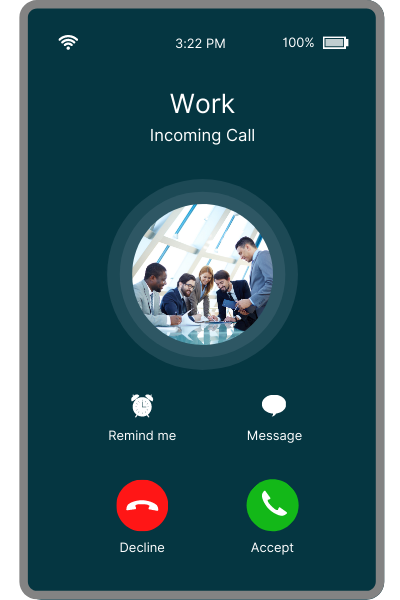The normal 40-hour workweek might soon be a thing of the past
 In the future, people may listen to the Dolly Parton classic “9 to 5” and wonder why she chose that timeframe.
In the future, people may listen to the Dolly Parton classic “9 to 5” and wonder why she chose that timeframe.
Among the many things the COVID-19 pandemic has changed are the hours and days businesses expect their employees to work.
What started as adjustments for safety and flexibility during the crisis may very well turn into permanent changes to the traditional 40-hour workweek.
More companies are realizing that alternative work arrangements can improve employee satisfaction and productivity while also saving on overhead.
Additionally, in an increasingly competitive hiring market, employers that don’t find ways to make themselves stand out risk losing top-tier talent.
Still, not every arrangement will work for every business. You’ll have to decide what best fits the needs of your organization and employees. Below are some of the top alternative work schedules that other organizations have had success with recently.
Remote 40-hour flexible workweek
The COVID-19 lockdown resulted in more than 40 percent of the U.S. labor force working from home full-time. Many thrust into this situation needed to deal not only with a new work environment, but also unprecedented familial obligations. Offering flexible hours became a way for employers to help staff members deal with online learning and childcare demands.
While necessity prompted this situation, preference may keep it going. Employers and employees alike at numerous companies see value in continuation.
“We are seriously considering making the change to remote work a permanent thing as this experience has made us realize that we don’t necessarily need to be in an office and to incur all the costs related to a physical location,” says Jenna Carson, HR Manager at Music Grotto. “Our productivity has remained high, and we have managed to keep the collaboration and communication that helps our business succeed.”
She also notes that since implementing flexible working hours, the company has seen an increase in engagement and motivation. “Our team is able to balance their work and home lives much more easily when working remotely, and this has led to a happier, more motivated staff.”
 Hybrid set-ups
Hybrid set-ups
Despite witnessing the feasibility of remote work and flexible hours, organizations often need or desire to maintain some on-site staff. Managers cite better collaboration and innovation when colleagues physically gather together. Additionally, businesses will want to provide the option for customers who prefer in-person interaction.
Additionally, not all employees want to spend their full 40-hour workweek work from home all of the time. They miss office socialization and getting out of the house.
So-called hybrid arrangements provide what many deem as the best of both worlds. Hybrids offer a range of possibilities based on needs and preferences. Some staff members may work solely from home, others exclusively in the office.
Employers may require everyone to come in on certain days and operate remotely on others. Others may let employees choose to work in-office a few days and telecommute the rest. Combinations abound.
The 3-2-2 schedule
One hybrid work arrangement gaining momentum is the 3-2-2 schedule. Employees work three days in the office, two days remotely, and have two days off. Experts believe the combination of traditional and remote work will promote a better work-life balance. However, it allows employers to still reap the benefits of physically gathering team members together.
Rotational schedules
For some employers, safety concerns fuel interest hybrid work arrangements. Jamie Hickey, founder of Xotive Facility Solutions, says that members of her 10- person staff determined they wanted to come back to work after quarantine restrictions lifted, but only if they could be socially distanced.
“This is what led to us adopting a hybrid schedule where we split the team into group A and group B,” Hickey says. “Group A comes into the office on Mondays and Thursdays, and group B comes in on Tuesdays and Fridays. We decided to have everyone stay home on Wednesday so that we could have the office cleaned.”
Four-day workweeks
Why is this idea, which has been tossed around since the 1970s, regaining attention? During the pandemic, many companies put a premium on work completion rather than on the number of hours employees logged. The result? A 40-hour workweek may not be necessary. Workers found ways to perform more efficiently so that they could devote the “leftover” time to helping their kids, exercising, and pursuing interests. If employees can get the same work done in less time, why not operate on a four-day schedule?
32-hour workweek, 4 days a week
Several studies support the value of reducing work hours, including one in New Zealand where participants worked 32 hours over four days instead of 40 hours over five days (while still getting paid the same). Stress levels dropped significantly, and engagement rose. Employees reported a nearly 25 percent improvement in work-life balance and feeling refreshed after the extra day off.
Companies in the United States convey similar findings.
“My biggest takeaway from implementing a four-day workweek is that the set-up actually makes everyone feel happier, including myself, because there is at least one additional day given to pursue personal endeavors,” says Willie Greer, founder of The Product Analyst. “It also gave us all some space to breathe and plan on how to mitigate the effects of the global pandemic we are in. In fact, the freedom this has afforded us also made us more sympathetic towards each other, and dare I say tightened the bond we have.”
Lianne Sanders, licensed yoga instructor and content editor at Total Shape, echoes this sentiment. “Since the pandemic, we have decided to adopt a flexible workweek, which is how this four-day work schedule got introduced. What we learned throughout the whole process was that apart from it being efficient, the team feels more relaxed since we only have to rag it up four days a week and allocate the remaining days solely for our personal errands and commitments. It even helps better the quality of work we produce since our team is even more composed when showing up for work whether it be in a physical setting or a virtual one.”
40-hour workweek, 4 days a week
Variations of the four-day workweek see employees putting in 10-hour days before receiving an extra day off. This schedule is unlikely to provide as relaxing of an experience as dropping the total number of hours worked. However, workers still get rid of some commute time and have a workweek-day for activities such as scheduling appointments or volunteering. Offices benefit from the decreased overhead experienced by one less day of operation. Or, if not closing the facility but rather operating with fewer staff members on-site each day, social distancing becomes easier.
The future of the 40-hour workweek
As more of the population becomes vaccinated, workday and/or workweek schedules at many companies will revert to a more traditional 40-hour workweek. Some leaders and employees will welcome this news as music to their ears. However, others will continue to rethink what the workweek looks like, finding new arrangements that make the organization more competitive.
Additional Resource: If a remote or hybrid workweek might be right for you, make sure to set up long-term teleworking arrangements the right way.



